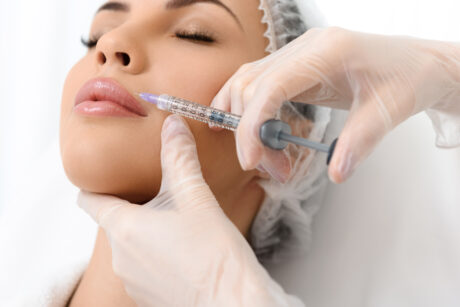
Lip blushing has quickly gained popularity as a semi-permanent cosmetic procedure that enhances the shape, color, and definition of the lips. Aspiring beauty professionals looking to excel in this field can greatly benefit from a permanent makeup course, which provides in-depth knowledge of lip blushing techniques, color theory, and hands-on training, paving the way for a successful career. The path to mastering full color lip blushing begins with a deep understanding of the technique and a keen eye for detail.
1. The Basics of Lip Blushing
Lip blushing is a specialized technique that involves depositing pigments into the lips to enhance their natural color and shape. It is achieved using a tattoo machine or a manual hand tool to create precise, controlled strokes. The goal is to achieve a soft, blended effect that mimics the look of naturally flushed lips. Proper permanent makeup training equips beauty professionals with the skills and knowledge necessary to perform this technique safely and effectively.
2. Understanding Lip Anatomy
The lips consist of various elements, including the vermilion border, the cupid’s bow, and the philtrum. Learning about these structures helps beauty professionals identify individual lip characteristics and determine the most suitable approach for achieving desired outcomes. A solid foundation in lip anatomy is a fundamental aspect of any comprehensive permanent makeup training program.
3. Color Theory and Pigment Selection
Choosing the right pigment is crucial in achieving natural and aesthetically pleasing lip blushing results. Understanding color theory is essential for selecting pigments that complement the client’s complexion, enhance their features, and meet their expectations. Our permanent makeup classes provide in-depth knowledge about color theory and guide beauty professionals in color mixing techniques to create customized shades tailored to each client.
4. Preparing the Client for Lip Blushing
Before performing any lip blushing procedure, it is essential to conduct a thorough consultation with the client. This involves assessing their medical history, lifestyle factors, and desired outcomes. It’s important to educate clients about the process, manage their expectations, and address any concerns or questions they may have. In addition, preparing the lips for the procedure by gently exfoliating and moisturizing helps create a smooth canvas for optimal pigment absorption.
5. Creating Lip Designs and Outlines
The next step in lip blushing is designing and outlining the lips. Taking into consideration the client’s lip shape, symmetry, and facial features, the beauty professional creates a customized design that enhances the natural aesthetics of the lips. Precise measurements and symmetry are crucial in achieving balanced and visually pleasing lip enhancements.
Exploring Ombre Lip Blushing
Before beginning any lip blushing procedure, it’s crucial to conduct a thorough lip analysis. This involves assessing the client’s lip shape, symmetry, and existing lip color. By understanding these factors, the artist can create a design that enhances the client’s natural features and achieves their desired outcome.
Layering Techniques for Ombre Effect
To achieve the ombre effect in lip blushing, layering techniques are utilized. The artist begins by outlining the lips with a darker pigment, gradually transitioning to a lighter shade toward the center. This gradient effect can be achieved through various techniques, including stippling, feathering, or shading. The key is to blend the pigments seamlessly, creating a smooth and natural transition.
Color Selection and Blending
Choosing the right colors for the ombre effect is essential to create a visually appealing and harmonious look. Typically, darker shades are used on the outer edges, while lighter shades are concentrated toward the center of the lips. The color selection should complement the client’s skin tone and personal preferences.
Precision and Attention to Detail
Achieving a flawless ombre lip blushing result requires precision and attention to detail. Artists must pay close attention to the depth and placement of each stroke to ensure a balanced and even distribution of color. Special care should be given to the cupid’s bow area, as it is a prominent feature of the lips.
Post-Care and Aftercare Instructions
After completing the ombre lip blushing procedure, it is crucial to provide clients with post-care and aftercare instructions. This includes advising them on proper lip hygiene, avoiding certain activities or products that may affect the healing process, and scheduling follow-up appointments if necessary.
Mastering Full Color Lip Blushing
Mastering full color lip blushing requires a combination of technical skill, artistic vision, and an understanding of the client’s desired outcome. This cosmetic procedure involves tattooing the lips with pigments to enhance their color, shape, and definition. Here are some useful tips and information to consider:
- Lip Design and Shape: Assess the client’s facial features, lip shape, and symmetry. Discuss the desired lip shape and outline with the client before starting the procedure. Use proper measuring techniques and drawing tools to create a precise and balanced lip design.
- Numbing and Pain Management: Apply a topical anesthetic to minimize discomfort during the procedure. Ensure the client is comfortable throughout the process by regularly checking their pain tolerance and providing breaks if needed.
- Technique and Application: Use a high-quality digital or rotary tattoo device with a fine needle to apply the pigment. Pay attention to needle depth, pressure, and speed for precise and even pigment distribution. Gradually build color saturation to achieve a natural and desirable result.
- Touch-up Sessions: Schedule follow-up appointments for touch-ups, as some fading is expected during the healing process. Touch-up sessions allow adjustments to color intensity, shape, or symmetry, ensuring client satisfaction.
Finally, it is crucial to receive proper education and training from reputable institutions or experienced professionals in the field of permanent makeup. Permanent makeup artists must understand the anatomy of the lips, color theory, sterilization techniques, and different application methods.